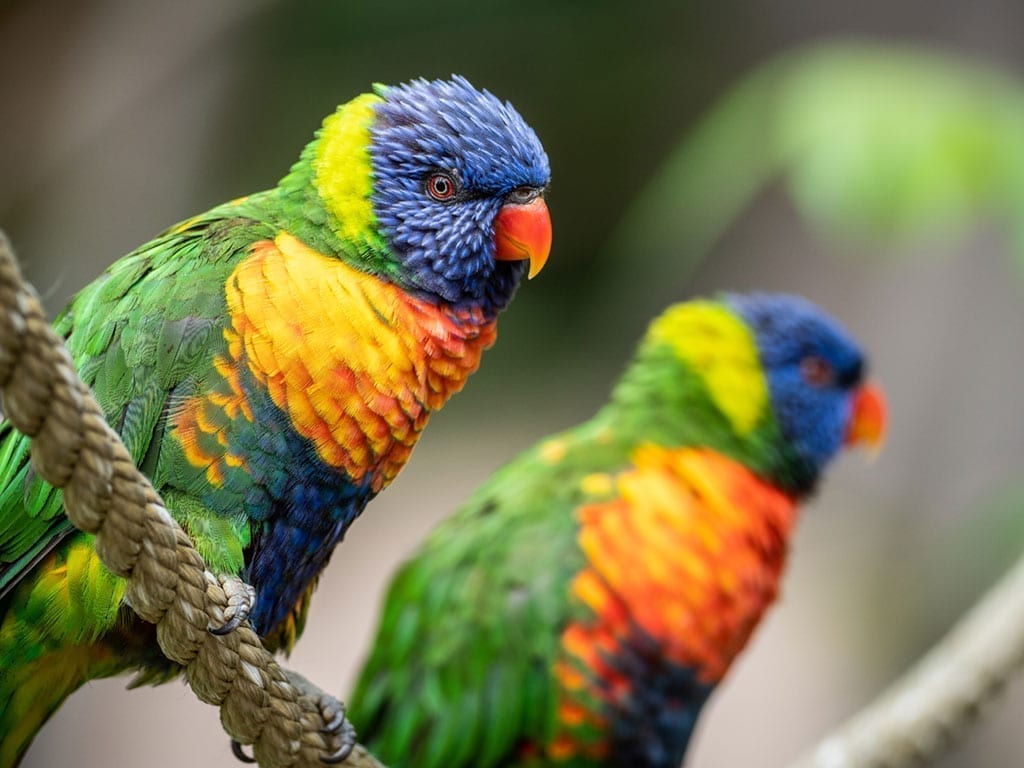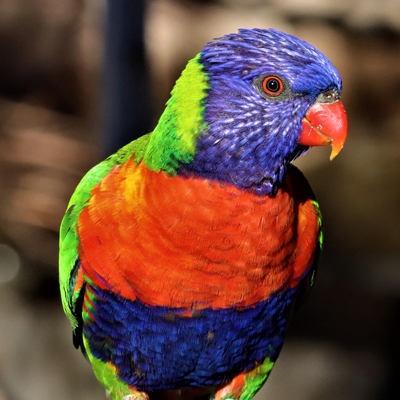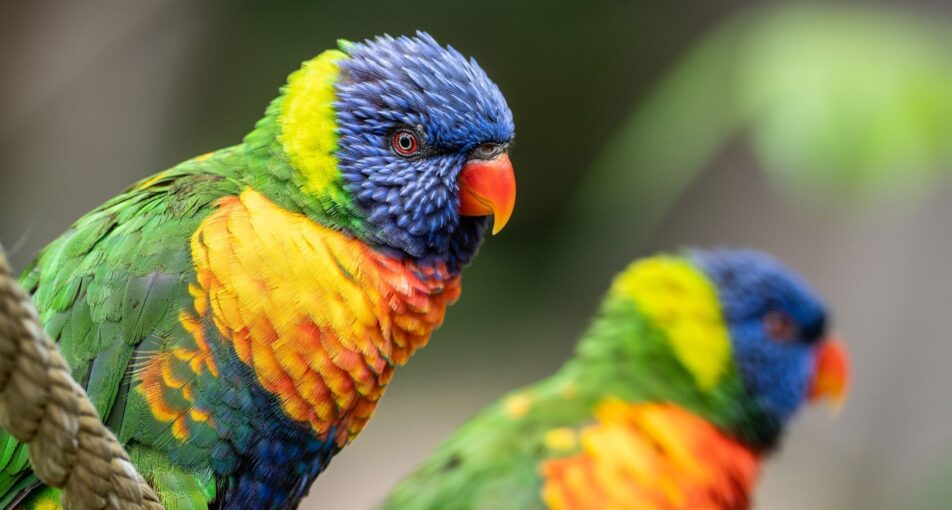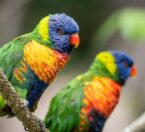Lorikeet species tend to form monogamous pairs, mating for life. Pairs groom one another while resting. They live in noisy flocks that can include several species and range in size from several pairs to hundreds depending on the abundance of food. They are very active and vocal, screeching as they fly through the canopy and chattering as they feed.
Classification
| CLASS: | Aves |
| ORDER: | Psittaciformes |
| FAMILY: | Psittacidae |
| GENUS: | Trichoglossus |
| SPECIES: |
Habitat & Range
These lorikeets live in portions of coastal Australia and on nearby islands. They are one of 12 genera of lories and lorikeets. The genus Trichoglossus includes eleven species and numerous subspecies. The rainbow lorikeet is widespread throughout northern and eastern Australia; the scarlet-breasted lorikeet is found on the Lesser Sunda Islands; the coconut lorikeet is native to New Guinea and north Queensland, Australia.
All species live in a variety of lowlands including secondary coastal forests, primary forests, coconut groves, plantations, savanna and mangroves.
Location


Adaptations
- Lorikeets’ beaks allow them to crush flowers making pollen and nectar easier to access.
- The tips of their tongues have tiny hair-like structures called papillae that help them harvest pollen and nectar; when the tongue is extended, the papillae are erect, looking like tiny brushes.
- Lorikeets have zygodactyl feet, two toes facing forward and two facing backward, making climbing and gripping easy; they are able to hang upside down to reach nectar.
- Lorikeets are entirely arboreal which helps keep them safe from potential predators.
- Their small size and bright colors act as camouflage in flowering trees.
- Their diet makes them good pollinators.
Physical Description
- Lorikeets range in size from ten to twelve inches (25-30cm) long and weigh 3.5 to 5.5 ounces (100-157g).
- They have long tapered tails.
- They are generally slightly smaller and have longer tails than lories, parrots that are members of the same subfamily, loriinae.
- Their plumage is very colorful featuring green backs and blue or brown heads. Their breasts and abdomens are multi-colored combinations of red, gold, yellow, green and blue that vary by species. Their common names describe the breast plumage of several species.
- Their sharply curved beaks are orange to red.
- Males are slightly larger than females with slightly longer beaks.
Diet
What Does It Eat?
In the wild:
Lorikeets have a specialized diet of mostly nectar and pollen. They also eat fruits, seeds and insects.
At the zoo:
The lorikeets at the Denver Zoo feed on nectar throughout the day and receive both whole and chopped fruits at the end of each day. Their fruit diet is comprised of apples, pears and bananas, along with an additional fruit or veggie for variety. Their nectar comes as a specialized powder containing vitamins, proteins, and fibers similar to what they would be eating in the wild and is mixed with water to allow for easy drinking.
What Eats It?
Predators include birds of prey and snakes. Humans hunt lorikeets for their plumage and to sell as pets. In agricultural regions they sometimes are killed because they forage in crops.

Social Organization
These lorikeet species tend to form monogamous pairs, mating for life. Pairs groom one another while resting. They live in noisy flocks that can include several species and range in size from several pairs to hundreds depending on the abundance of food. They are very active and vocal, screeching as they fly through the canopy and chattering as they feed.
Life Cycle
Mating season for these lorikeet species varies by locale. Courtship behavior includes wing-fluttering and swaying. They nest high in trees in hollows lined with decayed wood that both male and female prepare. The female lays two to three oval eggs about one inch long (2.7cm) and is solely responsible for incubating the eggs for 24-26 days although her mate may roost in the nest. The chicks hatch featherless and with closed eyes. Both parents participate in caring for the chicks. They fledge in about eight weeks. The young reach sexual maturity between 18 and 24 months. They can live twenty years or more in their native range.















